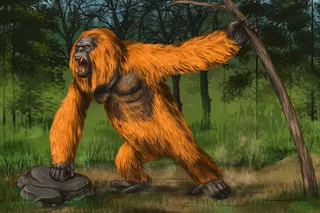During the Eocene Epoch, between 56 and 34 million years ago, West Texas wasn’t the desert it is today. Rather, the ecosystem would have been made up of closed canopied tropical rainforests similar to what we might find in places like Costa Rica today. It was rainy and damp with humidity you could cut with a knife.
Many of the fossils found in this part of the world are preserved in the serpentine rivers that meandered through the forests in a landscape dotted with volcanic highlands. It was a world where rodents a plenty — large and small — scurried about the forest floor along with perissodactyls like tapirs, horses, and ancient rhinos.
In much the same way as you find various species of primates living in tropical rainforests today, the Eocene in West Texas was the perfect habitat for a burgeoning species of small and large primates unique to ...















